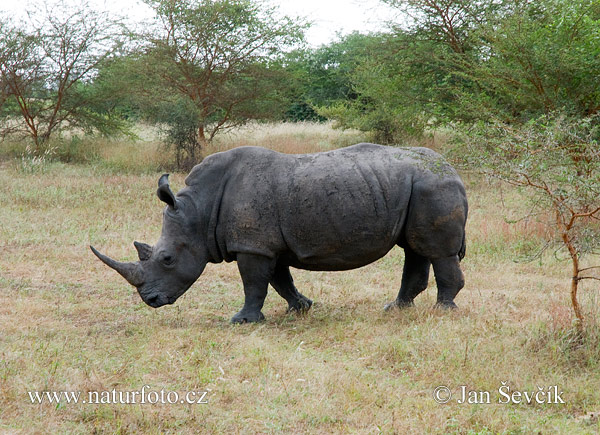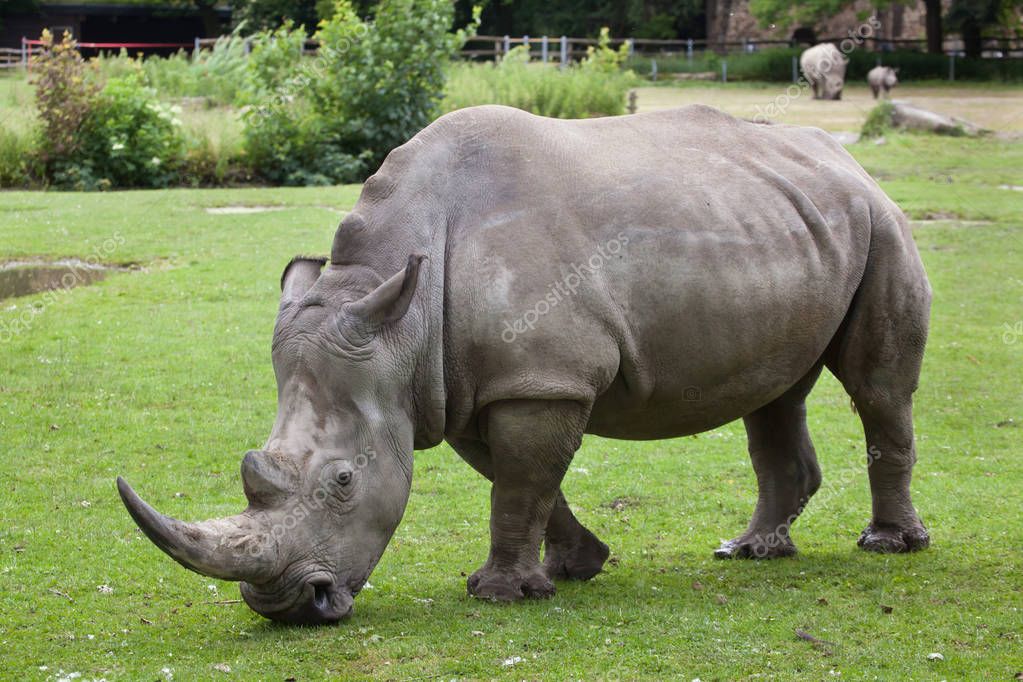
On 26 October 2011, the females were coaxed into the larger enclosure. There he roamed among many African animals, including several southern white rhino females and many plains animals. Since May 2010, the northern white rhino male Sudan was moved from the initial holding pens to a much larger 700-acre (2.8 km 2) semiwild enclosure.

Poachers have been selling their horns for $110,000 per kilogram ($50,000 per pound). They are protected round-the-clock by armed guards. In place of their horns, radio transmitters have been installed to allow closer monitoring of their whereabouts.

This also made them less vulnerable to the poaching that drove their species to near extinction, as the horn is what the poachers are after. To prevent any unnecessary injuries they might inflict on each other while interacting in their fenced area, and give their horns an opportunity to regrow to a natural shape (as their front horns had grown bent by much rubbing against enclosure bars in captivity), all the rhinos were sedated and their horns were sawn off. Ol Pejeta provides 24-hour armed security for the rhino enclosure. Īfter the transport, the four rhinos were under constant watch by specialists and staff, and lived in specially constructed bomas with access to a 400 by 400 metres (1,300 ft × 1,300 ft) paddock area, allowing them to acclimatize to their new surroundings. Sudan, caught from the wild in 1975, died on 19 March 2018. However, Suni, a male born at Dvůr Králové Zoo in 1980, died from natural causes in Ol Pejeta Conservancy in 2014. They arrived at the conservancy after an air and road trip on 20 December 2009, along with two male northern white rhinos from the Dvůr Králové Zoo, Suni and Sudan. They both belong to the Dvůr Králové Zoo in the Czech Republic, but live in Ol Pejeta Conservancy in Kenya, Africa. Her mother is Najin and her father was Saut.

However, the results of this research were not universally accepted by other scientists. According to the study, distinct morphological and genetic differences suggest the northern white rhinoceros and southern white rhinoceros have been separated for at least a million years. The two female rhinos belong to the Dvůr Králové Zoo in the Czech Republic but live in the Ol Pejeta Conservancy in Kenya and are protected round-the-clock by armed guards.Īccording to the latest International Union for Conservation of Nature (IUCN) assessment from 2020, the subspecies is considered "Critically Endangered (Possibly Extinct in the Wild)." Taxonomy įollowing the phylogenetic species concept, a study in 2010 suggested the northern white rhinoceros may be an altogether different species, rather than a subspecies of white rhinoceros, in which case its correct scientific name would be Ceratotherium cottoni. Since 19 March 2018, there are only two known rhinos of this subspecies left, called Najin and Fatu, both of which are female barring the existence of unknown or misclassified male northern white rhinos elsewhere in Africa, this makes the subspecies functionally extinct. Formerly found in several countries in East and Central Africa south of the Sahara, this subspecies is a grazer in grasslands and savanna woodlands.

The northern white rhinoceros or northern white rhino ( Ceratotherium simum cottoni) is one of two subspecies of the white rhinoceros (the other being the southern white rhinoceros).


 0 kommentar(er)
0 kommentar(er)
